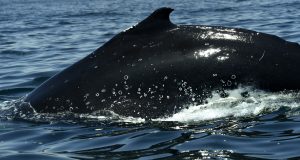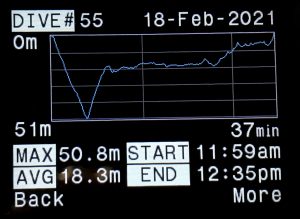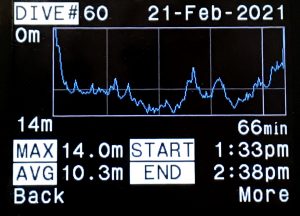Preparation
What do we feel at all times prior to going into action? Whatever the action is, it is normal to always feel tickling in the body, and nervousness . The most magical is that with repetition of this action things become more normal but one never loses the feeling of having butterflies in one’s stomach.
Why do I start this blog with a question? Because we live and aim daily to make the planet better, always creating new actions that have not previously existed and that is the conviction that we must always feel. That we will never give up even if the experience of each situation is painful.

Megaptera novaeangliae series Cetaceans 13 © Denise Lira Ratinoff
Today I want to talk about the importance of “preparation“. Traveling constantly and feeling that one is creating the same dynamic of development but in a different city, a different country and a different continent, in the end is the same, except with a different language, climate changes, with different scents, a different culture, different colors and the human quality of the people. What is most important is to focus on what we are doing and know that the results will always be different. This whole process entails great social responsibility since there is a very strong interest and credibility in regards to what is being done and at the same time accurate, certainly regarding the handling of each instrument and each movement.
What I mean with this is: that each instrument has its user manual and each movement has the responsibility of using wisdom and the lessons from our training. Therefore these two essential factors join during a dive, because basically they are the ones that keep us safe, alive, or unfortunately we end up with physical damage or worse: we can contract narcosis once we reach a certain depth.
I am going to share with you the beauty of the submarine world and explain how one can achieve great satisfaction after each immersion if the technical responsibilities of professional diving are applied especially when using a submarine video camera. The most important thing is to bear in mind the four pillars of diving: knowledge, skills, equipment and experience.

Megaptera novaeangliae series Cetaceans 16@Denise Lira_ Ratinoff.
It is fundamental to research in order to get to know the behavior of each creature in the Ocean and above all to adapt to a proper attitude, to know how long to wait until one has their acceptance and then start filming. The same happens with the subject of not feeling like a predator towards them and scare them since they will not only escape but also they can activate their natural defense mechanism and attack you. It is esencial to be as close as possible and face each creature or stay below them in order to capture the images at first impact. For example, if you are facing a Cetacean, the most beautiful would be to be three fourths in front of them so that each image can capture the sensation of the beating of your heart.
It is necessary to have one hundred percent knowledge about diving, since the skill is the key to not to scare the creatures, to make breathing fluid, calm, almost invisible and the buoyancy has to be completely under control. One must always be in a state of “slow motion”. The same happens with the subject of the flapping of your fins, not only to not destroy marine life but also not to leave any evidence that filming was taking place there. Respect towards the marine ecosystems makes you feel the right to be floating and sharing life under water. The control of your breathing, if you are using a bottle or scuba tank, is fundamental to achieve a prolonged and peaceful staying. These skills are only acquired with training and hours underwater.
The equipment is the essence to protect one’s health and make the diving a satisfactory experience at all times. Using a computer for diving is essential to have control of all the variables of an immersion since every signal it indicates must be respected, for example to not fall in decompression*, check temperature, depth, the safe time for stopping and above all be conscious of the timing.

Diving Computer Profile 50 Mts.

Diving Computer Profile 14 Mts.
It is a fact that one can not go back and film the same scene, but it is better to stop filming and see if the computer is really indicating an alert.
The longer the amount of time that you are diving, the fewer things you want to use underwater and just focus on being able to transmit what you are living through the images. This can only be achieved by having control and responsibility of oneself as an autonomous diver.
The experience can only be obtained with accumulation of experienced diving under any situation. The more experiences that you have in the water will make everything become more natural in every sense. Many times one is not able to film what one is seeing, but at least one has lived the experience and it can later be put into words.
For example, once I went through a shipwreck, and the life that I found there was majestic. I saw a diversity of corals, sponges, shoals, schools of fish and two large moray eels in the former equipment room of the ship. Unfortunately there were so many particles in the water that it was not possible to film all of it. All though I couldn’t film it, at least I have the image alive in my mind and I can transmit it to the world afterwards. In order to be able to go through parts of the shipwreck we entered in a vertical position upside down in spaces where only the camera would fit and that allowed us to capture the experience of very narrow spaces. I got to a point of so much control and practice that it felt like I was using the camera like I would on the ground.
After describing some vital aspects to enter the world of diving I would like to reiterate the importance of the conviction that one must have regarding the objective one wishes to achieve. The Ocean world is very vast, therefore we have to research a lot and then guide people and transmit the knowledge from the beauty, in order to really be able to communicate the importance of conservation of this magical place.
* decompression means that the diver has surpassed the maximum level of NO decompression, meaning that he or she will not be able to go directly to the surface, but will have to make a decompressive stop towards the depth that his or her computer will indicate or has been planned. Lene Spaarwater.
Denise Lira Ratinoff has been a Plastic Oceans Ambassador since 2019 and is working on a new project called AIR(E). In this blog series she shares with us how she experiences the ocean and marine life through her artwork and all the personal and technical challenges she has to overcome to capture the ocean and marine life as good as possible for her project. This is the first installment of the series.

Trackback: 6 เกม PG Slot ที่มีชื่อเสียงและนิยมเล่น
Trackback: เทคนิค การแทงบอลออนไลน์
Trackback: Dental1
Trackback: ปั่นสล็อต อย่างไรให้โบนัสแตกบ่อย แจกจริง
Trackback: ปั่นสล็อต upx1688 โบนัสแตกบ่อย
Trackback: huayyim เว็บหวยครบวงจร